12 Monkeys (1995) Explained: “The movie never changes. It can’t change. But every time you see it, it seems different because you’re different,” muses the central character, James Cole – a disoriented time traveler – in Terry Gilliam’s engrossing sci-fi, 12 Monkeys (1995). The lines seem to perfectly reflect the multiple experiences of watching the intricately layered Terry Gilliam flick. Written by screenwriting couples David Webb Peoples and Janet Peoples (David revised the script of Ridley Scott’s Blade Runner), the chief inspiration behind 12 Monkeys was Chris Marker’s ingenious sci-fi short La Jetee (1962). Mr. Marker predominantly used still images to tell the tale of a time traveler in the aftermath of a nuclear apocalypse. The eloquent short contemplated the themes of time, perception, and memory long before the arrival of Tarkovsky’s masterpieces.
Though the core of 12 Monkeys remains the same as La Jetee, Peoples’ script, and Gilliam’s idiosyncratic direction beautifully expands upon the premise and fascinatingly explore the similarities and differences between a pre-pandemic world and a dystopian future. The paranoia and befuddlement at the center of 12 Monkeys look very familiar now, especially as the feelings of terror and uncertainties during the COVID-19 pandemic still remain fresh in our memory. And as Abraham Reisman’s article on the film in ‘Vulture’ says, “one of the most currently relevant pieces of science fiction ever committed to celluloid.”
Such spellbindingly ambiguous cinema demands a detailed analysis of the plot and it’s themes. Now let’s unpack the assortment of mysteries in Terry Gilliam’s time-hopping 12 Monkeys.
12 Monkeys (1995) Movie Plot Explained
Who Unleashed the Plague?
The film is set in Philadelphia in the year 2035. A devastating viral plague has claimed the lives of 5 billion people. A handful of human survivors live in a subterranean community. At the movie’s beginning, we see our protagonist James Cole (Bruce Willis), imprisoned in a lair within the underground society. He is picked up for ‘volunteer duty,’ i.e., forcing convicts to make a trip to the abandoned, deadly surface in order to find clues related to the plague. Donning a protective plastic suit, Cole is transported to the surface. The air is toxic for humans. The landscape is frozen and dilapidated, reclaimed by nature and wild animals.
Cole collects a cockroach and a spider in the jars for underground scientists, and he recovers from the panic of stumbling across a grizzly bear. Soon, Cole unearths a possibly vital clue in his trip. He clears the snow off a board and reads, “We did it,” and the board bears the sign of ‘12 Monkeys.’ Who are the ‘12 Monkeys’? Did they cause the plague? Since Cole was successful with his journey to the surface, a group of weird-looking scientists pick him to go back in time, i.e., to the end of 1996, when Philadelphia became the ground zero of the plague. The mission is to find more clues about the possible plague-spreading terrorist outfit.
The denizens of the dystopian society are living under an authoritarian regime. Therefore, James Cole doesn’t have much choice. In return for his service, the scientists promise him a reduced sentence. Unfortunately, the time-travel device is still a work in progress. Convicts like Cole were perhaps used as guinea pigs to test the technology. Hence, the man from the future arrives in the year 1990 in Baltimore. The journey through time also has visible physical effects on the traveler. The chaos that follows lands the drooling and mumbling Cole at a mental asylum.
A Ploy to Escape and a Mysterious Disappearance
At the institution, James Cole meets Jeffrey Goines (Brad Pitt), a hyperactive individual whose quicksilver delivery of thoughts withholds kernels of truth. From mass media to consumerism and the general definition of insanity, Jeffrey, the paranoid schizophrenic troublemaker, walks Cole through the ironies of late 20th-century human society. Cole narrates his story to the doctors of the institution. The disbelief on their faces is apparent. Adopting a dispassionate tone, Cole tells the psychiatrists that the world will face a devastating viral pandemic in six years, i.e., 1996. He further states that their mission isn’t to save the world but to gather information about the lethal virus. Future scientists specifically need access to the unmutated form of the virus in order to find a cure for the people of 2035.
Among the group of doctors listening to Cole, Dr. Kathryn Railly (Madeleine Stowe) is thoroughly intrigued by Cole’s story. Moreover, she feels an inexplicable connection with this alleged time traveler. When Cole says he can clear this up with a phone call, Dr. Railly takes the initiative to make the call. But when the call only leads to a dead end, the psychiatrists are convinced of Cole’s delusional nature. Cole is disappointed over his inability to find any data regarding the ‘Army of 12 Monkeys.’ Nevertheless, Jeffrey volunteers to help Cole break out from the institution. One day while interacting with Jefrrey, Cole, and watching a TV report on the cruelty of lab animal testing, he casually remarks, “Maybe the human race deserves to be wiped out,”
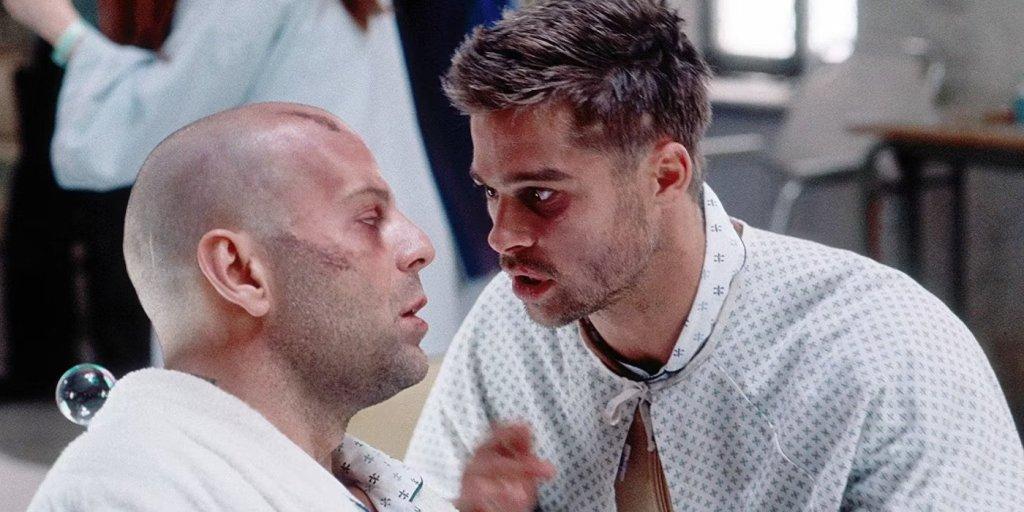
The idea instantly intrigues Jeffrey, although he comments, ‘it’s a long-term thing.’ On the day of escape, a heavily drugged Cole gradually makes his escape as Jeffrey deliberately creates a ruckus in the asylum’s rec room. Unfortunately, the escape attempt fails. Cole is locked in a cell and bound to the bed with shackles. However, the doctors soon find the cell empty, and Cole has mysteriously vanished.
The Doomsayer’s Second Chance
Still disoriented from the drugs, James Cole wakes up in a cell in 2035. He hears a mysterious raspy voice (credited as ‘Louie’), which addresses Cole as “Bob.” Cole hears the voice couple more times in the narrative, specifically during moments of extreme duress. One obvious theory is that the strain of time travel has caused the auditory hallucination in Cole. But later in the narrative, Cole meets a homeless man in 1996 who speaks in a raspy voice and calls himself Louie. The old homeless man states that he is a fellow time traveler who has managed to evade the scientists’ control by pulling out his teeth. The question of who is the ‘raspy voice guy’ looms over us when Cole gets another chance to meet the beggar.
Whoever the strange guy is, Cole is brought back to the scientists, who offer him another chance to travel back in time. Subsequently, for the first and last time, we look at the time travel device, which looks like the crude model of the Na’vi-human hybrid pod in James Cameron’s Avatar films. The time travel goes horribly wrong once again. James Cole wakes up naked in the middle of the World War I battlefield. He finds his cellmate and fellow time traveler, Jose, grievously injured in the trench warfare. A stray bullet pierces Cole’s leg, but fortunately, he is suddenly transported to November 1996, Baltimore.
It might be a few days or hours for Cole since his last encounter with Dr. Kathryn Railly. But it’s been six years for the psychiatrist, and the encounter with Cole has impacted her life. She has been researching mentally ill individuals in history who have claimed to be from the future and forewarned about the world’s impending apocalypse. Dr. Railly has titled her book ‘The Doomsday Syndrome,’ and in her lecture, she refers to this kind of disbelieved doomsaying as ‘Cassandra Syndrome’ – based on the Greek mythological story of a Trojan priestess. While signing copies of her book, Dr. Railly comes across a smug red-haired man (David Morse) making some strange comments.
Soon after the book launch event, Dr. Railly gets into her car, and she is alarmed to find a man in the backseat. The man, of course, is James Cole. He forces the doctor to drive him to Philadelphia (since he doesn’t know how to drive a car). Moreover, he is in pain due to a bullet wound in his leg. Meanwhile, the absence of Dr. Railly is notified to the authorities. Naturally, the doctor finds it hard to comprehend Cole’s erratic behavior. He swoons over the purity of the air and the beauty of music- things that are not present in their dystopian world.
On the car radio, Cole hears a news story about a boy trapped in a well. Cole says that he remembered this story when he was a kid. He further declares that the boy isn’t in the well; he is simply playing a prank and hiding in the barn.
The Army of 12 Monkeys and their Links to a Virologist
In downtown Philadelphia, James Cole finds the stenciled graffiti of ‘12 Monkeys.’ The finding leads Cole and Dr. Railly to a dilapidated theatre, where two hoodlums attack them. Cole suddenly turns violent and kills one of the men who try to sexually assault Dr. Railly. Dr. Railly could have easily escaped from Cole or informed the authorities. But she is more intrigued by the opportunity to study Cole’s alleged delusions. Hence, she follows him around. Later, Cole comes across a place in downtown Philadelphia, which he remembers seeing among the photo clippings shown by the scientists. The place turns out to be the office of the Freedom for Animals Association (FAA) headquarters. Cole and Dr. Railly meet three young ideologues running the association, and they deny any knowledge of the ‘Army of 12 Monkeys.’
Cole threatens them at gunpoint. While Dr. Railly apologizes for the mentally disturbed guy’s intimidating behavior, one among the three blurts out the name ‘Jeffrey Goines.’ Upon further inquiry, Cole learns that Goines’ father is a Nobel Prize-winning virologist (Christopher Plummer). Initially, Jeffrey protested against his father’s use of animals for laboratory tests. But then he got bored of picketing and leafleting and progressed to more counterproductive guerilla actions. Later, Jeffrey is said to have found an underground army with eleven of his buddies. Is Jeffrey the leader of the ‘Army of 12 Monkeys’, which stole a deadly virus from the virologist’s lab and unleashed it upon the human race? The three FAA members, however, are skeptical of Jeffrey. They say that he sold out on his friends and became subservient enough to take care of his father’s labs.
Cole takes Dr. Railly to Jefrrey’s father’s vast mansion, where the virologist hosts a party. Before that, she removes the bullet lodged below his knee. Dr. Railly still dismisses Cole’s story as delusions and mere coincidences. At the mansion, Cole manages to have a private conversation with Jeffrey, who credits Cole himself for planting the idea of ‘wiping out humans.’ Cole is further confused and alarmed by Jeffrey’s statement that he mentioned about his virologist father in the asylum’s dayroom. Furthermore, Jeffrey attests that Cole suggested stealing a ‘germ’ from the lab. A visibly enraged Cole denies suggesting such a horrific idea. Nevertheless, the altercation draws the attention of the security guys, and Cole runs away from the place.
Cole is injured in the ensuing chase into the woods, where Dr. Railly waits for him with her car. The bloodied and upset Cole wonders if he was responsible for the death of five billion people. His memory of his stay at the mental health institution is fuzzy, so he doubts himself. Dr. Railly sees police officers approaching the woods. She leaves Cole for a moment to draw their attention. But when she turns back, James Cole has once again done the vanishing act.
What does the Anarchic Mission of Jeffrey Goines Entail?
James Cole travels back to the future. In 2035, the eccentric scientists congratulate Cole for linking 12 Monkeys with the famous virologist. They officially pardon him and mention that others will now take over the task of finding the virus’ source. Surprisingly, Cole shouts at them, firmly believing that all these people are only in his head. He declares, “I am insane. And you are my insanity.”
Meanwhile, Dr. Railly is surprised to hear the news report that the boy, supposed to be stuck in the well, was hiding in a barn (just as Cole foretold). Later, she meets with her superior and confesses that she’s witnessing something beyond her understanding. She forlornly states, “I’m losing my faith.” After one more interaction with the ‘raspy voice,’ Cole seeks an audience with the scientists. Subsequently, in 1996, Dr. Railly receives a call from a detective. He says that the bullet she took out of Cole was made before the 1920s. Dismayed by this news, Dr. Railly checks the research material she gathered for her book. Earlier, during the book launching event lecture, Dr. Railly mentions the story of a wounded World War I soldier who claimed that he was from the future and later vanished out of thin air. We know that this soldier was Cole’s buddy Jose.
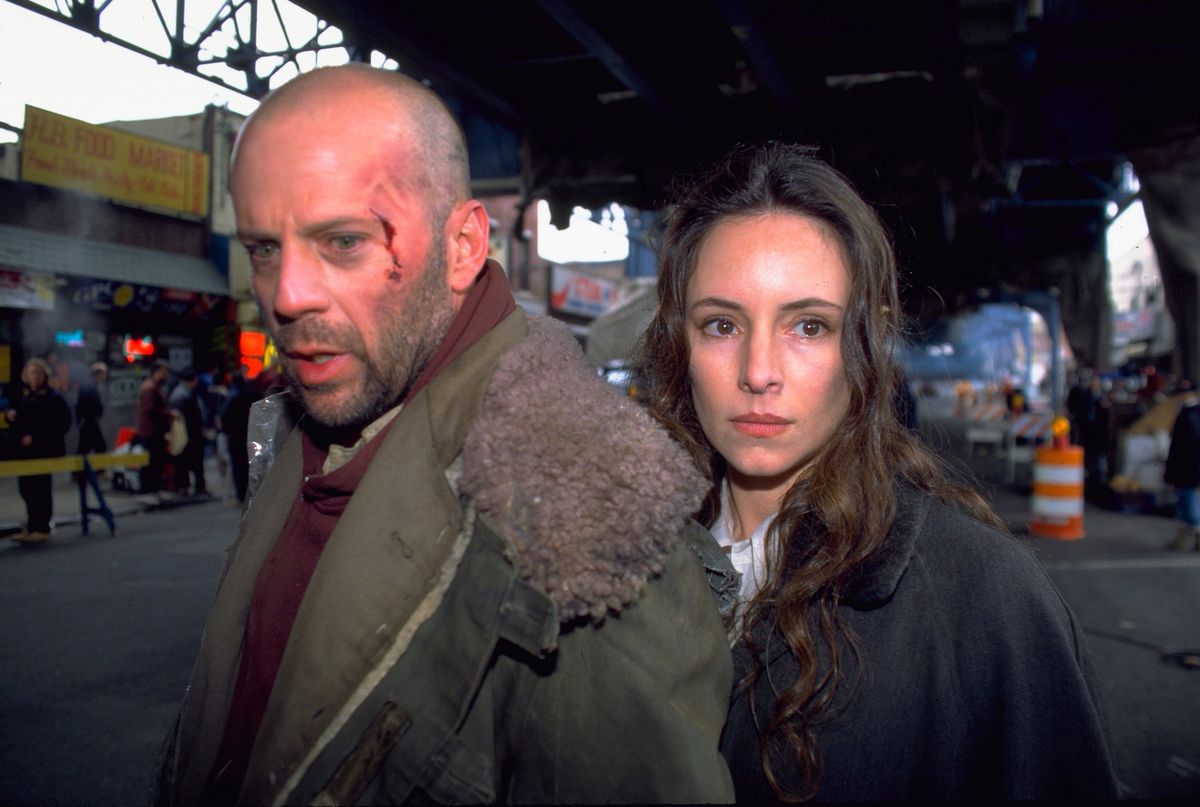
Dr. Railly soon faces the biggest shock in her life, as in the old photos of Jose, there’s also a distant shot of injured and naked James Cole. Meanwhile, in 2035, James Cole convinces the scientists to send him to December 1996. Since he has gained enough experience, Cole firmly believes he can crack the mystery. Back in 1996, Dr. Railly – unbeknownst to her – is turning into ‘Cassandra.’ She calls the virologist, Dr. Goines, and warns him about a possible security lax in his lab facility and that his son Jefrrey might exploit it.
Dr. Goines casually dismisses her concerns. But he speaks to an assistant and fellow scientist in the lab about the security measures in their facility. This man is none other than the smug and creepy red-haired man who attended Dr. Railly’s lecture. Now it’s clear to the audience who actually unleashed the virus. Adding to our growing list of bewilderment, we process the information that Dr. Railly’s call has given the red-haired man an opportunity to access and steal the virus.
Nevertheless, we wonder what anarchic plan Jeffrey Goines is cooking up with his buddies at the FAA headquarters. In fact, the next stop for Dr. Railly is downtown Philadelphia. Jeffrey and his co-conspirators have locked themselves inside the building and ignore the anxious doctor. Hence, she spray-paints the FAA office, questioning if that place is the source of the virus, which is one of the photographs James Cole has seen in his rendezvous with the scientists in 2035. The past is unfolding precisely in the way it’s supposed to be.
The Animals are Free, but Humans Can’t Escape their Grim Fate
Soon, Dr. Kathryn Railly meets James Cole, and the duo, in order to evade the cops, hides among the vagrants and eventually gets into a hotel. The doctor asks Cole about the ‘boy in the barn’ and the ‘WWI bullet.’ Interestingly, Cole believes that he is delusional despite what he said to the scientists. In contrast, Dr. Railly is convinced that Cole is from the future and that the impending apocalypse is real. A violent intruder and, subsequently, the arrival of cops force the duo to escape the hotel premises. Cole and Kathryn decide to call the number Cole tried in 1990. After making the call, Kathryn is happy because the number actually belongs to a carpet cleaning company.
But Cole correctly predicts the message Kathryn left, even though he wasn’t close to her when she made the call. It’s because her message about ‘Army of 12 Monkeys’ – in a scrambled voice – is played to him by the 2035 scientists before he made his second visit. Once again, we learn that the events of December 1996 are unfolding in a fixed path. The growing bond between Cole and Dr. Kathryn Railly has become more than that of a doctor and a psychiatrist. She wants to save him and the world. To not draw the attention of cops, Kathryn buys clothes and wigs and seeks temporary respite in a 24-hour theatre, playing Hitchcock classics, including Vertigo (1958).
Later, on their way to the airport in a taxi, the driver mentions that the traffic jam is caused by some organization that has freed the animals from the zoo. The report on the radio says that a scientist’s son has done it. On top of that, this guy has locked up his scientist father in one of the cages. Now it becomes clear why Jeffrey kidnapped his dad and what the 12 Monkeys’ real mission was. “We Did It!” message Cole discovered was only about freeing the animals. However, when James Cole enters the airport, he is greeted by his buddy Jose, and he gives him a gun. Meanwhile, Kathryn looks at the newspaper picture of Dr. Goines in his lab. Standing by his side is his assistant, the red-headed man mentioned as Dr. Peters.
To her surprise, she bumps into Dr. Peters at the airport. He is reportedly traveling to all the major cities across the globe with strange-looking vials in a metal suitcase. Kathryn connects the dots and runs to Cole. But just as Cole tries to gun down the man with the suitcase, the cops shoot down Cole. The time traveler has sacrificed himself to identify the man responsible for spreading the virus. An anxious Dr. Peters boards the plane and takes his seat. The woman sitting next to him expresses her dismay over the shootings at the airport.
The woman with a glass of champagne is one of the scientists from 2035. It might have been a few minutes since James Cole’s death, but with the last two messages from Cole, the scientists from the future have figured out the virus’ source. It also becomes clear that Cole was just a pawn in the scientists’ elaborate plan. “I’m in insurance,” she (cheekily) says to Dr. Peters.
Like Jose and Cole, many time travelers were perhaps sent to crack the mystery. Moreover, Dr. Peters has already released the pathogen in the airport when the airport security checks the vials. So, the women scientist from the future is surely isn’t there to save the spread of the pathogen. As already said by Cole, the scientists simply want a sample of the virus’ unmutated form to find a cure. How exactly does she get the sample? Were the surviving humans of 2035 made it to the surface? The answers to those questions are unnecessary. Terry Gilliam’s 12 Monkeys simply wants us to experience one man’s pre-determined journey to save humanity by sacrificing himself.
12 Monkeys Ending Explained: What’s the Meaning of the Recurring Dream?
One of the crucial motifs in 12 Monkeys is the recurring dream of James Cole. In the dream, a little boy watches a long-haired man gunned down at the airport. Subsequently, a blonde woman in a red dress screams and runs toward the bullet-riddled body. Cole wakes up from this dream in 2035 in his prison cell. It’s hinted that he has had this dream all throughout his life. Later, with each of Cole’s trips back in time, little details emerge in the dream. When Cole starts doubting his sanity, he sees the long-haired man chasing a red-haired man, who happens to be Jeffrey Goines. After Cole’s encounter with Dr. Kathryn Railly, he dreams that she is the woman in the red dress, wearing a blonde wig. Furthermore, he shares the details of his dream with the psychiatrist.
Gradually, Cole understands that the recurring dream isn’t just a dream. He realizes it, particularly after wearing disguises during the Hitchcock cinema screening. Feelings of deja vu strike him immediately after entering Philadelphia airport. Of course, the boy in the dream is none other than little Cole, accompanied by his parents. But the innocent eyes of the kid are eventually cursed to witness a violent death – the death of his own future self. Dr. Kathryn Railly, who is now aware of Cole’s recurring dream, even spots little Cole among the crowd and smiles at him. The beginning is the end, and the end is the beginning. James Cole will be repeatedly drawn toward the thing he very much needs to avoid.
Related Read: Kin-dza-dza! [1986] Review – An Extremely Amusing Soviet Sci-Fi Cult Classic
Thematic and Visual Analysis of 12 Monkeys
Determinism vs. Freewill
Time travel paradoxes are always a head-scratching subject. One might wonder how did events unfold in the original timeline. In 12 Monkeys’ case, a viewer might question how the ‘apocalypse nut’ Dr. Peters got the idea of releasing the deadly virus if not for Dr. Kathryn Railly and James Cole’s intervening presence. We don’t know how the virus spread in the unaffected timeline. Moreover, the repeated time-traveling of various players from the future has made it tough to figure out the truth of an original timeline.
At the same time, time travel in sci-fi movies is closely associated with the concept of parallel timelines. Avengers: Endgame (2019) and Netflix’s German TV series Dark (2017-2020) are recent popular examples of utilizing parallel timeline ideas.
In 12 Monkeys, Cole’s journeys through time, alongside the scientists’ mistakes (like sending Cole to 1990 & 1917), create co-existing different timelines. And possibly the viral apocalypse is a predestined event that happens with or without the intrusion of time-traveling agents. Determinism, in fact, triumphs, particularly in this story of James Cole and Dr. Kathryn Railly. Every ignorant mistake or conscious decision brings Cole and Kathryn closer to that significant moment at the airport.
12 Monkeys inclines towards the deterministic nightmare. Cole’s time travel creates different timelines, and they have an impact on the events. Yet, despite changes or mistakes made in the timelines, everything leads to the big event of Cole getting gunned down and the red-haired Dr. Peters boarding the plane. Kathryn’s feelings of deja vu regarding James Cole, her research about doomsayers in history, her call to Dr. Goines, and the recorded message intercepted in the future – every seemingly random event or decision looks like yet another puzzle piece in the predetermined universe.
Another theory is that maybe the light of free will somewhere exists adjacent to the overarching darkness of determinism. As mentioned above, in one of Cole’s dreams, Jeffrey Goines is the red-haired man with the metal suitcase. This scenario probably represents a timeline where that is a possibility. Perhaps, like Doctor Strange’s gesture of raising a finger at the end of Avengers: Endgame, there’s a single chance that James Cole breaks free from the shackles of a predetermined fate.
12 Monkeys also takes us through an inward transformation of James Cole. His relationship with Dr. Kathryn Railly is fascinating. Firstly, he checks all the boxes of her diagnosis of a paranoid schizophrenic. But later, the doctor – and we, the audience – are increasingly drawn into his reality. With Kathryn’s support and compassion, Cole overcomes his own vulnerability and doubts and embraces his fate. He stops being a victim of the scientists and tries to make his own path. He might not have succeeded, but they both acknowledged and cherished each other’s kindness and understanding. Maybe that’s what matters in the end.
Memory, Trauma, and Madness
The other significant themes apart from determinism and free will are the themes of mental illness, trauma, and memory. James Cole withholds the traumatic memory of witnessing a man getting killed. The trauma is so etched deeply within that it drives his dreams. Interestingly, the script refers to Alfred Hitchcock’s Vertigo (1958) at one key point. Vertigo not only explored the blurring boundaries between reality and illusion, but it also questioned the nature of memory and trauma. In Vertigo, the protagonist’s infatuation and the subsequent mental trauma after losing his love push him to invent a double and manipulate or distort the memories.
Distorted memories, trauma, and the creation of double happen on multiple levels in the time-jumping narrative of 12 Monkeys. The Vertigo scene within 12 Monkeys specifically refers to the ‘Muir Wood’ sequence as Madeleine points out her life span on the tree rings of an ancient redwood tree. The scene offers a fascinating parallel to 12 Monkeys’ central plot, although Cole’s lifespan doesn’t unfold in a small straight line.
A lot can be read in the Peoples’ script regarding mental health issues. Cole is forced to carry out an insane quest. Making meaning out of such madness puts a strain on his sanity (alongside the messy time travel). And eventually, his mind doubts the quest itself. Moreover, the narrative ambiguously handles the ‘messiah complex’ trope (Donnie Darko was another time-travel narrative that withheld such ambiguity). In fact, the ambiguity comes from not romanticizing Cole’s special mission and by making him and the viewers question the idea of such a fantastical quest.
Terry Gilliam’s Dystopian Visual Component
Terry Gilliam is one of the original image-makers in cinema. Of course, his visual idiosyncrasies are considered too eccentric for the mainstream. Yet from his contribution to the animation department in Monty Python’s Flying Circus (1969) to his crazy (and cursed production of adventure drama The Man Who Killed Don Quixote (2018), Gilliam’s distinctive aesthetics make him stand out.
12 Monkeys was one of the few films in his directorial career where Gilliam wasn’t involved with the script work. Though he was director-for-hire in this film, Gilliam seems like the perfect filmmaker to visualize the Peoples’ script. In fact, Gilliam has previously dealt with a time-travel narrative (Time Bandits, 1981) and a dystopian narrative (Brazil, 1985). The latter of which was the reason for a bitter conflict between the filmmaker and Universal Pictures. Hence, it was a surprise that Gilliam returned to Universal to make 12 Monkeys.
Terry Gilliam wisely utilized Universal’s $29.5 million budget (very modest considering the scope and ambition of the narrative) by bringing in an established star like Bruce Willis and by casting the rising young generation actor of the time, Brad Pitt. Mr. Willis took a pay cut for the opportunity to work with Gilliam. For cinematography, Gilliam went with his Brazil cinematographer Roger Pratt. Working with the production designer Jeffery Beecroft and DoP Pratt, Gilliam brilliantly envisioned a decaying, broken-down past and future world of 12 Monkeys.
Like Brazil (1985), Gilliam created a grungey, retrofuturistic aesthetic. The creepy globe of TV screens, adjustable metal seats, the claustrophobic, gloomy interior of the underground community – a sense of primitivity prevails in the aesthetic. It’s as if the post-apocalyptic underground human society has adopted the technology of the pre-apocalypse era and patched it up to fit their needs. Every frame is a little skewed to express discomfort and uncertainty. What’s more interesting about 12 Monkeys’ aesthetics is how the paranoia and uncertainty flow throughout the narrative, whether the past or the future.
The use of dutch angles and fish-eye lenses are also prevalent in the scenes set inside the mental institution. It gives the feeling of being trapped in the head-space of our disoriented protagonist James Cole. Indeed, the whole mise en scene makes us doubt if Cole suffers from the condition of mental divergence. Cole’s experiences in the futuristic society before his first trip and his experiences in the mental asylum also sort of mirror each other; the way Cole is enquired by the scientists, later by the psychiatrists; and the way Cole is scrubbed and prodded after his first surface trip in 2035, and later after his entry into the institution in 1990.
12 Monkeys exist in the porous layers between madness and sanity, fantasy and reality, future and the past. Therefore, Gilliam’s anarchic, warped visual style comes across as a perfect choice.
Final Thoughts
While earlier apocalypse movies coming out of America zeroed in on the fear of nuclear war, 12 Monkeys was centered around the anxiety over a deadly viral epidemic. Two global health crises exacerbated societal fears at the end of the 20th century: One was HIV/AIDS, and the other was Ebola. The virus narrative in Terry Gilliam’s film is partly built on such feelings of trepidation. Furthermore, in the post-Covid era, the detail that the virus was made in the lab gives us chills. And what’s more intriguing is the ample commentary concocted by Gilliam and Peoples, where they find parallels between modern medical institutions and a dystopian future.
While appreciating the many flashes of brilliance in 12 Monkeys, let’s also not forget the sensitive and career-best performance of Bruce Willis. The startling emotional intensity with which the actor plays the stupefied time traveler will stay in our minds.

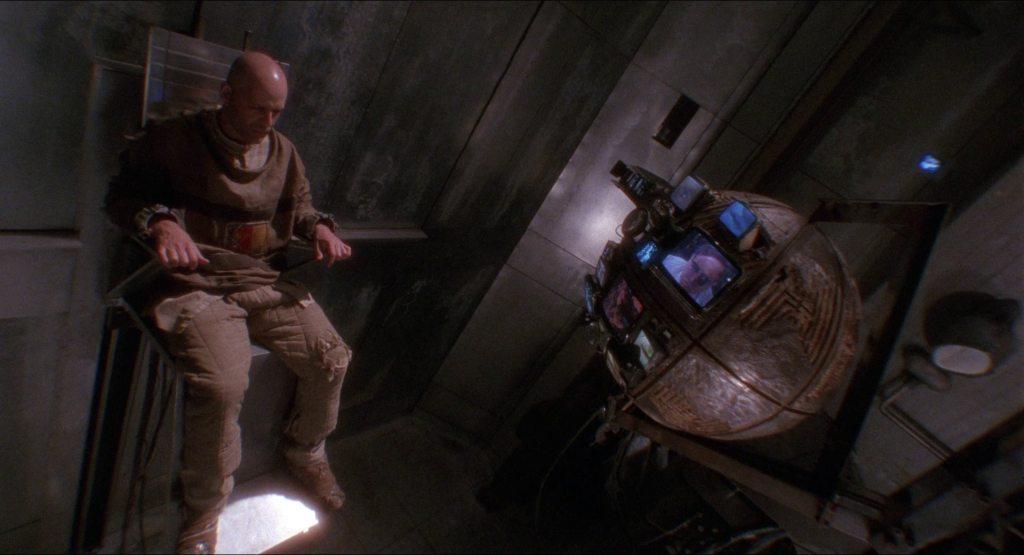


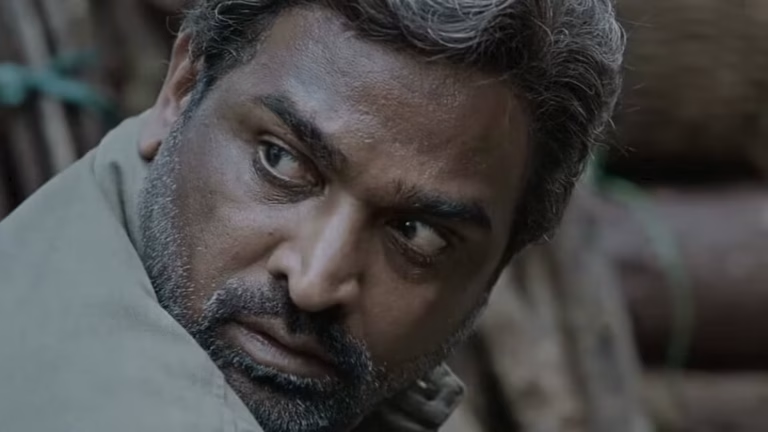

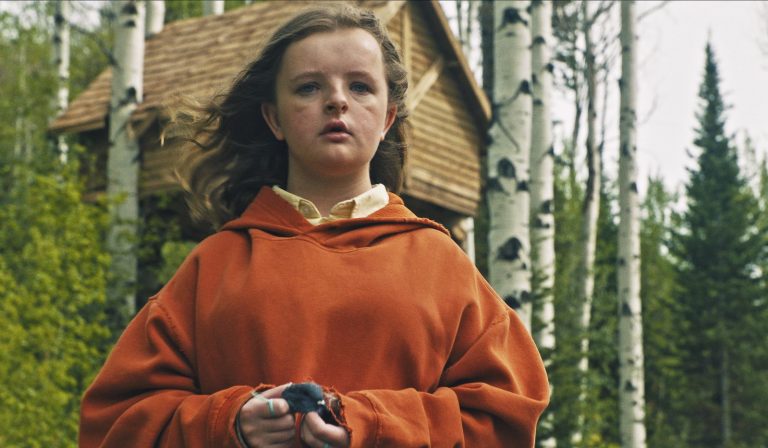
![Séance on a Wet Afternoon [1964] Review– A Visually Entrancing and Superbly Written Character Study](https://79468c92.delivery.rocketcdn.me/wp-content/uploads/2021/10/Seance-on-a-Wet-Afternoon-1964-768x432.jpg)
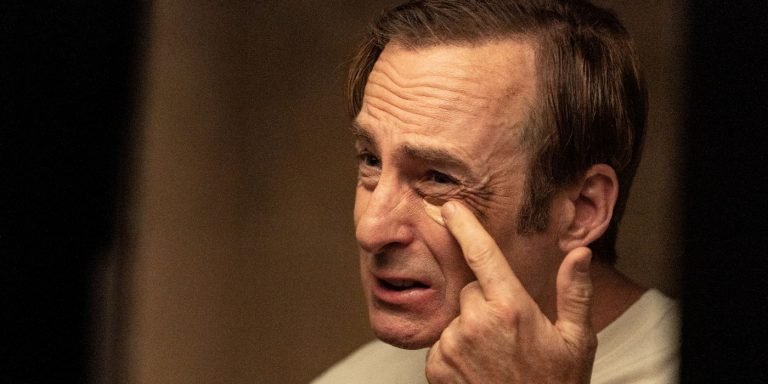
![Searching Review [2018]: Go Find This Film!](https://79468c92.delivery.rocketcdn.me/wp-content/uploads/2018/09/Searching_HOF-768x432.jpg)